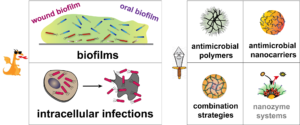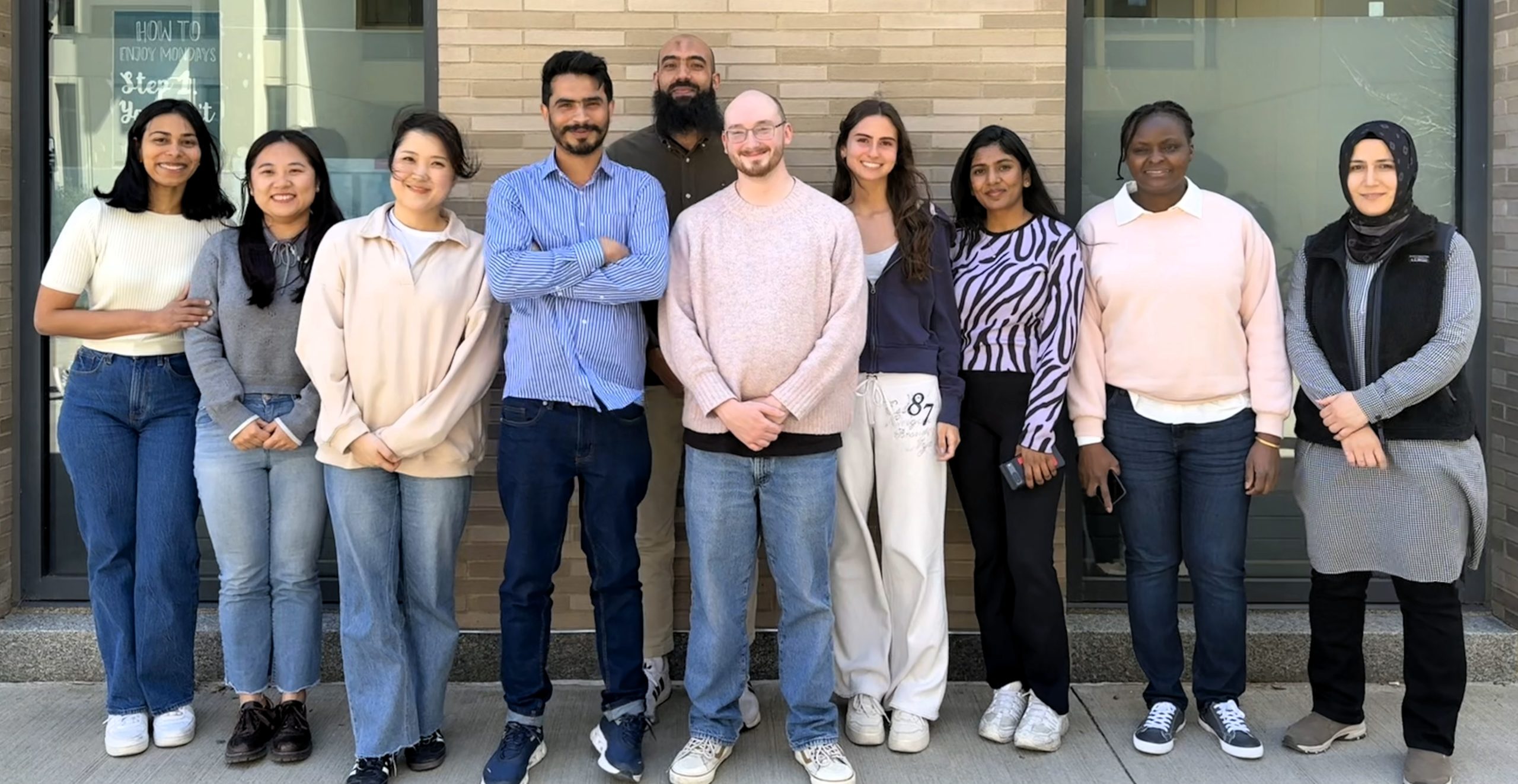Combating resilient bacterial infections through nanomaterial-based strategies!
Multi-drug resistant (MDR) infections, especially biofilms and intracellular infections, are an urgent public health care concern. The treatment of biofilm-related infections is especially challenging due to the protective mechanism of the matrix surrounding the bacterial cells and the multifaceted micro-community residing within. On the other hand, intracellular infections require antimicrobials that can go inside the host cells and interact with the resident infecting bacteria. These complexities must be taken into consideration when designing novel antimicrobials to achieve therapeutic success.
Advances in nanomaterial-based therapeutics and understanding their interactions with bacteria and biofilms provide a promising opportunity to effectively combat these resilient infections. Research in our subgroup focus on developing and using different nanostrategies for the treatment of wound and oral biofilms, and intracellular infections. We utilize polymeric nanoparticles that possess inherent antimicrobial activity and excellent biofilm penetrating ability, attributed to their physicochemical properties resulting from the thoughtful design of the polymers. We also have nanoparticles that function as delivery vehicles to other antimicrobials including bacteriophages that are potent but are limited with their hydrophobicity and limited capacity to penetrate the biofilm matrix. Moreover, both antimicrobial polymers and polymeric nanocarriers are being used for combination therapy alongside other existing antibiotics for improved efficacy.
Selected References:
- ACS Nano, 2024
- ACS Appl. Mater. Interfaces , 2024
- Environ. Sci.: Nano, 2023
- Biomaterials, 2023
- J. Controlled Release, 2023
- ACS Appl. Mater. Interfaces, 2023
- Antibiotics, 2023
- Mater. Horiz. 2021 .
- ACS Biomater. Sci. Eng. 2021.
- Nature Reviews Microbiology,2020.

